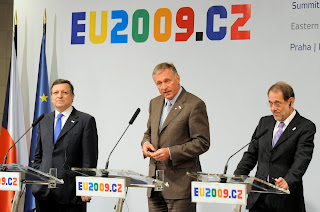Belarus and the Eastern Partnership
The transformation process after the collapse of the Soviet Union leaded to a kind of rapprochement of many Eastern European countries to united Europe. Among the new neighbouring countries after the Eastern enlargement in 2004 and 2007, Belarus remains an exception in many respects with its supposed neutrality and autoctrative style of governance. Nearly 1250 kilometres forming the common border of the European Union with Belarus. But after the era of European enlargement and the increased dominance of territory and borders in the path toward national political and economic strength of Russia, the real test for Belarus' transition lies in the overcoming of two different political approaches: the European Neighbourhood Policy's "ring of friends" and the Russian "near abroad" policy.

